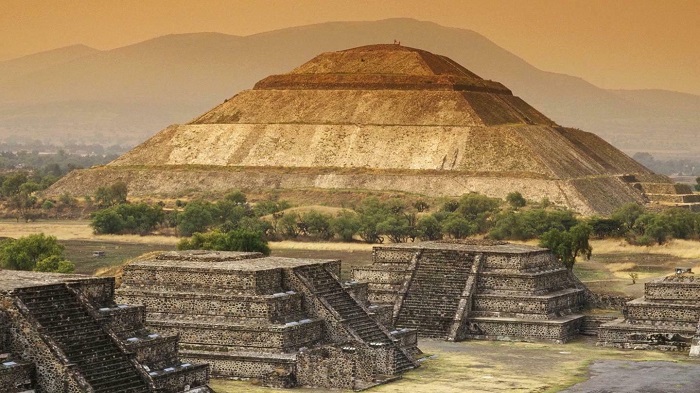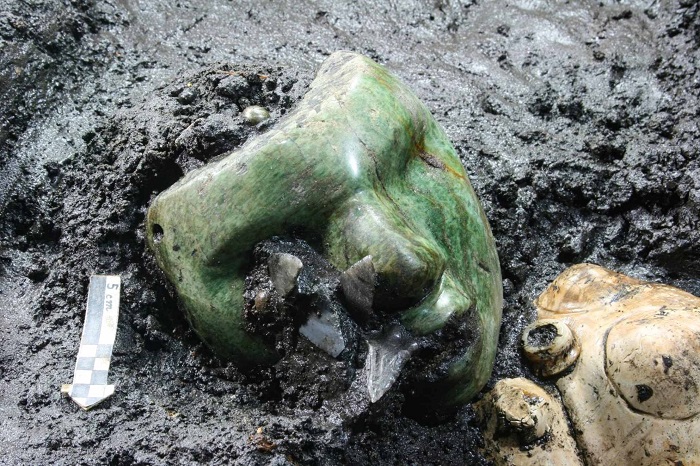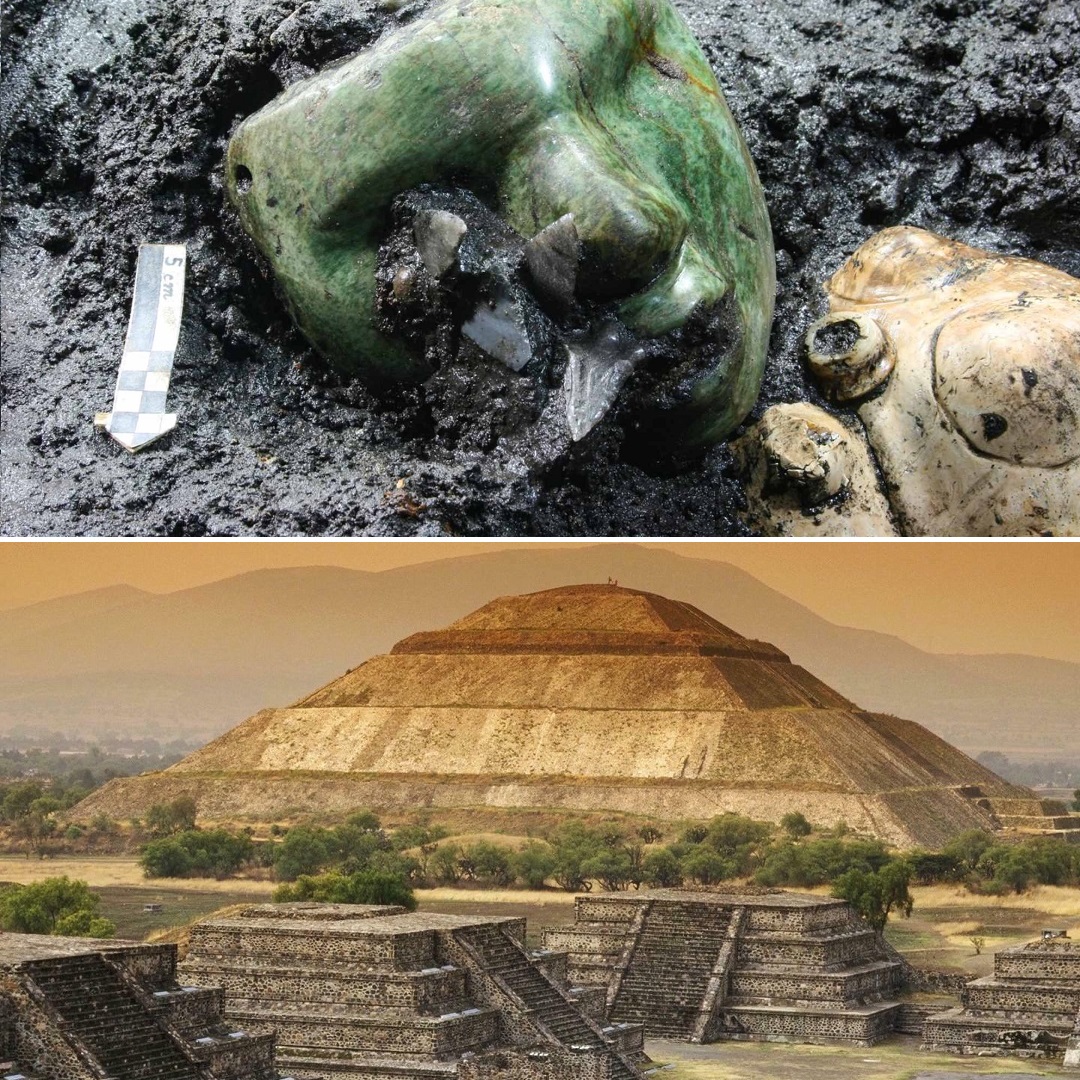Unearthed among the rare findings by the famous Teotihuacan site in Mexico, the mask stands out for its simplicity.
The Pyramid of the Sun, located in Mexico, is a majestic structure with a long and intriguing history. It was built around 100 BC and is the largest building in Teotihuacan. Despite many archeological studies, there have been few artifacts found on the site. However, in 2011, a remarkable discovery was made by INAH (Mexico’s National Institute of Anthropology and History) that was quite unexpected.
In the 1930s, archeologists were excavating 59 holes and three short tunnels within the pyramid in search of offerings and burials. They excavated a 380-foot-long tunnel in order to arrive at the mother-rock level. At this point, a remarkable hoard of artifacts was discovered, including fragments of clay pottery, bones of animals, pieces of obsidian, three serpentine human figurines, and a remarkable green serpentine mask. This mask was particularly interesting, as it was the only one of its kind to be found in a ritual context at Teotihuacan.

The researchers also found two offerings — one containing the green mask and another offering — at the base of the pyramid. They’ve also uncovered seven human burials, some of them infants, that even predate the Pyramid of the Sun structure.
It is commonly thought that these offerings were placed as part of a ritual to inaugurate the construction of the pyramid – which explains why it is situated at the bottom. The mask itself is incredibly realistic, prompting the idea that it could be a portrayal.
This would be remarkable, as researchers know little about the individuals behind Teotihuacan’s construction. Additionally, there are conflicting speculations about the purpose of the pyramid. Even the name is not authentic.
The Pyramid of the Sun was given its name by the Aztecs, who visited Teotihuacan many years after it had been left deserted. Unfortunately, the original name of this third-largest pyramid in the world remains a mystery.

In its heyday, Teotihuacan was home to an impressive 200,000 people, known as the City of the Gods. Yet, the dominant inhabitants of this city have long been gone and no one knows why, or who they were.
It’s no wonder that INAH persists in its research in the region, and recently they discovered a tunnel underneath the Pyramid of the Moon. This was done without excavation by means of electrical resistance technology, which allowed for mapping of the area.
The discovery of a chamber, 49 feet in diameter, preceding a subterranean chamber, may lead to the uncovering of further treasures which may provide further insight into the great civilization and its eventual decline.
Veronica Ortega, director of the ‘Integral Conservation Project for the Plaza of the Moon,’ noted that “these large offering complexes constitute the sacred heart of the city of Teotihuacan, the reason why everyone saw it as the mecca of the civilization,” and that “What can be found inside them will help unravel the relationship this ancient metropolis had with other regions of Mesoamerica.”

